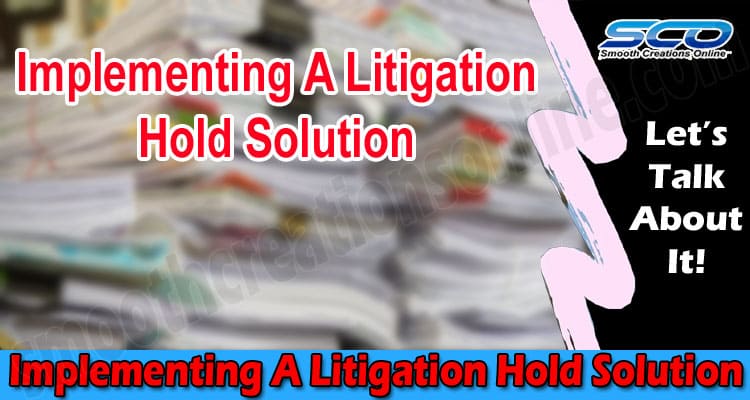Implementing A Litigation Hold Solution: As a key decision-maker, you must deal with critcal issues every day. There is never enough time to get everything done. Furthermore, you are responsible for initiating, executing, and monitoring conformity with a Legal Hold or preservation order in the face of pending litigation, regulatory request notifications, and organizational investigations.
Non-compliance can have serious repercussions. Failure to properly maintain electronically stored information (ESI) for eDiscovery can result in long-lasting ramifications, not to mention catastrophic legal outcomes. This is why mastering the appropriate implementation of preservation orders is crucial.
The litigation hold procedure can be intimidating and time-consuming. However, there is some good news. While establishing preservation orders requires planning, the correct litigation hold software can reduce your workload and allow you to focus on more high-value strategic issues. Here is what you should know about litigation hold and associated software.
Table of Contents
Developing a Legally Sound Litigation Hold Procedure:
Employees are directed to retain certain physical and electronic information and record what could be important to an existing or potential lawsuit or inquiry when a litigation hold is issued. Data must not be altered, erased, or destroyed due to the legal obligation to safeguard it. Otherwise it could result in the irreversible loss of data, an act known as spoliation.” Hard evidence, such as printed records and all types of ESI, are subject to the duty to retain data.
The courts have the jurisdiction under Federal Rule of Civil Procedure 37(e) to punish parties that enable or cause the spoliation of accessible evidence. A litigation hold is the first line of protection for your corporation against data spoliation and the consequences that come with it.
Issuing a Lawsuit Hold Procedure:
To construct defensible litigation holds, corporations must engage in extensive planning. Because speed is of monumental importance when a lawsuit is anticipated, legal departments must design a preservation order mechanism that they can enforce promptly and consistently.
Implementing an information retention policy and practicing excellent data hygiene are the first steps toward defensible litigation. Corporations can use a retention strategy to reduce the quantity of data they keep. The less material they have, the less maintenance they have to deal with.
You must issue a preservation order and suspend your standard data retention policy once a lawsuit is fairly expected. The legal department sends individuals who may hold relevant data the Legal Hold order. Unfortunately, you can’t make any assumptions regarding how swiftly the preservation order will reach the concerned individual and what action they will initiate.
Choosing the Right Litigation Holding Technology:
This process can be made easier with litigation hold software. The software solutions can help you automate common tasks, reduce human labor, and manage the litigation hold process smartly and defensibly. Litigation hold software improves efficiency in the following areas:
- Issuing a preservation order
- Custodians’ or Stewards’ interview
- Keeping track of important data
- Automatically sending out alerts and reminders
- Compliance verification
- Creating a detailed tracking system with report generation.
The correct litigation hold software can greatly impact how well your preservation order process is implemented and defended.
Find Answers to These Questions before Choosing a Litigation Hold Solution:
Examine the suitability of potential litigation hold remedies by finding the answers to the following questions.
- Is it Possible to Automate Communications?
Your ideal platform will automate and monitor conversations across numerous cases with any number of data stewards. Communication is streamlined with templated messages, surveys, and scheduled automated reminders, conserving time and reducing risk.
- Is it Safe to Incorporate?
In the litigation hold process, safety is paramount. Do your homework before entrusting your company’s data to any software provider. You’ll need permission from the IT division to use the application you desire. Make their job easier by ensuring that the system you consider has two-factor authentication, end-to-end encryption, customer isolation via network privacy, and permission-based user.
- Is the Process of Gathering, Uploading, and Saving Data Streamlined?
Data is available in various formats from a multitude of repositories and platforms. This implies you’ll need direct access to a variety of web repositories. You’ll require a litigation hold solution that storesdata in a centralized location and supports all file types. You’ll also need the capacity to capture data fast and efficiently if preservation is a challenge.
- What are the Benefits of Using Smart Litigation Hold Software?
A litigation hold is an essential and tedious aspect of the eDiscovery process since it involves the entire corporation’s data in the event of a potential lawsuit. Innovative Legal Hold software is the ideal solution that can help you efficiently manage numerous and substantial preservation challenges, strengthen the defensibility of your preservation order, and free up time for additional strategic work.


